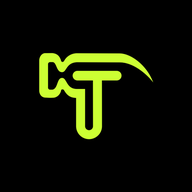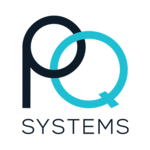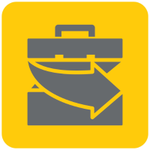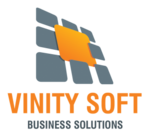What Is Tool Management Software?
Tool management software is a comprehensive solution that simplifies and optimizes the process of managing tools and equipment for enterprises of any size. This program enables businesses to efficiently track, organize, and maintain their tool inventory, making it an invaluable asset to any firm that relies on tools for operations. At its core, tool management software provides a single platform for cataloging all tools and equipment, including serial numbers, purchase dates, and warranty information.
This not only helps to keep track of the tools, but it also allows businesses to make informed decisions about equipment upkeep and replacement. One of the primary benefits of tool management software is its ability to increase workplace efficiency and productivity. By delivering real-time information on tool availability and location, it eliminates the need to manually search for them, saving time and decreasing project delays.
Furthermore, this software includes capabilities like scheduling and reservations, which allow employees to quickly reserve tools as needed, preventing conflicts and ensuring that the proper tools are available at the right time. It also provides a thorough usage history, allowing enterprises to discover any misuse or neglect of tools, lowering maintenance and replacement expenses. Tool management software also addresses security concerns.
Businesses can regulate who has access to specific tools by creating user accounts and defining access restrictions, which ensures responsibility and prevents equipment theft or loss. In addition to these functionalities, some tool management software provides sophisticated options such as tool calibration and reporting, which can help ensure tool accuracy and operation while also creating information on tool usage, maintenance costs, and other valuable metrics.
Overall, investing in tool management software can help firms improve organization, increase efficiency, cut expenses, and eventually lead to higher productivity and profitability. With so many options on the market, customers must carefully examine their demands before selecting the program that best meets their expectations.
What Are The Recent Trends In Tool Management Software?
In recent years, the requirement for effective tool management has progressively expanded across industries. As a result, the tool management software market has experienced substantial growth and development.
To keep purchasers up to date on the current trends, here are the top recent innovations in tool management software:
1. Cloud-Based Solutions: Because of the growth of cloud computing, tool management software is now available as a cloud-based solution, making it more accessible and scalable to enterprises of all sizes. This trend has also resulted in enhanced collaboration and remote access capabilities, enabling teams to manage tools and projects from any location with an internet connection.
2. Integration With IoT: The integration of Internet of Things (IoT) technology with tool management software enables real-time tool tracking and monitoring. This has not only increased accuracy in tool usage tracking, but it has also greatly decreased the chance of tool loss or theft.
3. Mobile Applications: With the growing usage of smartphones and tablets in the office, tool management software has expanded to incorporate mobile applications. This enables on-the-go tool access and administration, making it easier for field personnel to monitor tool inventory and usage.
4. Data Analysis And Reporting: Tool management software now includes comprehensive data analytics and reporting capabilities, which provide useful insights into tool usage, maintenance, and costs. This information can assist firms in making data-driven decisions and identifying areas for improvement in their tool management operations.
5. Artificial intelligence (AI): The introduction of AI technology into tool management software has increased its capabilities, including predictive maintenance. AI-powered software may analyze data and detect patterns to forecast when a tool will require repair, saving downtime and extending tool lifespan.
Benefits Of Using Tool Management Software
Tool management software is becoming a vital tool for enterprises of all kinds due to its numerous advantages. It provides a comprehensive solution for organizing, tracking, and managing tools, equipment, and assets in an effective and streamlined manner.
Here are the main advantages of utilizing tool management software, which make it a smart investment for any organization:
1. Centralized Tool Database: One of the primary benefits of adopting tool management software is the ability to store all tool information in a single, secure location. This eliminates the need for several spreadsheets, manual tracking, and scattered data, making tool data more accessible and manageable for all personnel.
2. Real-time Tracking And Monitoring: Tool management software allows for real-time tracking and monitoring of tools from the moment they are distributed to employees until they are returned. This leads in precise tracking of tool usage, location, and status, ensuring responsibility while lowering the risk of loss or theft.
3. Increased Efficiency And Productivity: Tool management software allows firms to improve their overall efficiency and productivity. Automating operations like tool issue and return, maintenance scheduling, and inventory management saves staff time and allows them to focus on more critical responsibilities.
4. Improved Tool Utilization: Tool management software provides insights into tool utilization, enabling firms to detect underutilized instruments and prepare for more efficient use. This can result in cost savings and improved resource management.
5. Preventive Maintenance: Keeping tools in good working order is critical for efficient corporate operations. Tool management software has capabilities that allow firms to create preventive maintenance schedules and alarms, ensuring that tools are properly maintained and repaired on time.
6. Cost Savings: By successfully controlling tool inventory and avoiding loss or theft, tool management software can help firms save money over time. It also eliminates the need for paper-based tracking or spreadsheets, resulting in lower printing and storage expenses.
7. Regulatory Compliance: Tool management software can assist firms in industries where tools or equipment are subject to regulatory compliance by ensuring that all tools are properly maintained, certified, and comply with rules. This can help to avoid any legal complications or penalties.
Important Factors To Consider While Purchasing Tool Management Software?
When it comes to choosing tool management software, you must carefully evaluate a few essential elements to make the best option for your firm. This sort of software is intended to assist organizations efficiently and successfully track, manage, and maintain their tools, equipment, and assets.
Let's go over the most crucial elements to consider when selecting tool management software.
1. Compatible With Your Existing Systems And Processes: The first and most important element to examine is if the tool management software is compatible with your current systems and processes. It's critical to select software that works seamlessly with your existing systems and is simple to use. This will help to reduce disruptions and enable a smooth transition to the new software.
2. Features And Functionalities: Tool management software offers a wide range of features and functions. It's critical to determine the services your firm requires, such as asset tracking, inventory management, reporting, and maintenance scheduling. Examine the characteristics and functionalities of various software solutions to discover which one best suits your organization's requirements.
3. User-Friendliness: Another crucial consideration is how easy the software is to use. Your staff will be utilizing the program on a daily basis, so select a user-friendly interface that is straightforward and simple to use. This will help to reduce the learning curve and enhance software adoption rates.
4. Scalability: As your firm grows, your tool management requirements will alter. It's critical to select software that is scalable and can meet your future requirements. This prevents you from having to transition to new software in the future, which can be both time-consuming and expensive.
5. Technical Support And Customer Service: It's usually a good idea to go with tool management software that provides dependable technical assistance and customer service. If you run into any problems or have concerns about the program, having access to a skilled and responsive support team can make a big difference in the success of your deployment.
6. Cost: Because tool management software can be a major expenditure, it is critical to budget properly. Look for software that suits your budget and provides a high return on investment. Keep in mind that the cheapest option is not always the most cost-effective in the long term, therefore take into account the features and functionality.
7. Security: Given that sensitive data is housed in the software, security is an important consideration. Make sure the tool management software you chose has strong security features in place to keep your data safe from cyber attacks and unwanted access.
What Are The Key Features To Look For In Tool Management Software?
When it comes to selecting Tool Management Software, there are several important elements to consider before making a purchase. These characteristics will not only assist you in selecting the best software for your company's needs, but will also ensure that you are investing in a long-term solution to optimize your tool management operations.
The following are the key features to look for in Tool Management Software:
1. Customizable Tool Tracking: Look for software that lets you personalize and mark your tools based on your inventory and tracking requirements. This allows you to readily identify and locate tools, as well as track their use and upkeep.
2. Barcode And RFID Scanning: Barcode and RFID scanning capabilities improve tool tracking efficiency and accuracy. This function allows you to quickly scan and update information about your tools, reducing human errors and saving time.
3. Real-Time Inventory Management: A decent Tool Management Software should provide real-time information about your tool inventory and usage. This will offer you a clear image of which tools are in stock, in use, or need to be replaced, allowing you to avoid losing or misplacing tools.
4. Maintenance And Repair Tracking: This feature allows you to schedule and track maintenance and repairs for your tools, ensuring that they are always in good working order and decreasing downtime. Some software also allows you to create reminders for preventative maintenance, which extends the life of your tools.
5. User Access Control: Most firms have multiple teams or individuals who require access to specialized tools. Look for software that allows you to configure user permissions and access control, ensuring that only authorized users may access and use specific tools.
6. Reporting And Analytics: Analyzing tool usage and analyzing trends can help you make more informed inventory selections. A decent tool management software should have reporting and analytics functions that provide insights into tool usage, location, and maintenance data.
7. Integration With Other Systems: If you already use inventory management or accounting software, you should consider purchasing a tool management system that integrates easily with those systems. This will save you time and effort while managing various applications.
8. Mobile Compatibility: With mobile compatibility, you and your team may use the tool management system from anywhere and at any time, making it easier to manage tools while on the road.
Why Do Businesses Need Tool Management Software?
Businesses constantly struggle to organize, track, and manage their tools and assets, resulting in inefficiencies, lost productivity, and higher expenses. Here's where tool management software comes in. It is a robust and comprehensive solution for streamlining and centralizing all elements of tool management, giving firms a complete picture of their tools and assets.
One of the key reasons why firms use tool management software is to get better visibility and control over their instruments. This program allows businesses to track the availability, location, and use of their tools in real time, ensuring that they are in the right hands at the right time. This eliminates the need for manual tracking methods while also lowering the risk of missing or stolen tools.
In addition to tracking, tool management software includes features like automated check-in/check-out, reservations, and maintenance and replacement notifications, ensuring that the tools are always in good working order and ready for use. This not only saves time and effort, but also helps to avoid delays and downtime caused by malfunctioning or missing tools.
Furthermore, tool management software provides complete reporting and analytics capabilities, allowing firms to gain vital insights into the use and performance of their tools. This information can be utilized to discover patterns, optimize tool allocation, and make educated decisions about purchasing or retiring equipment. Another key advantage of tool management software is its compatibility with other corporate systems, such as inventory management and accounting software.
This enables for smooth data flow and eliminates the need for human data entry, which reduces the possibility of errors. Overall, deploying tool management software can help firms improve efficiency, lower expenses, and boost production. It automates the entire tool management process, from acquisition to retirement, allowing businesses to make data-driven decisions while always having the correct tool for the job.
What Is The Level Of Customization Available In Tool Management Software?
Tool Management Software is an essential tool for companies of all sizes to manage inventory, track usage, and improve operations. One of the key elements that distinguishes this program is its amount of customization. This capability enables firms to customize the software to meet their individual requirements, making it a worthwhile long-term investment. In general, Tool Management Software provides a great level of customisation to its users.
Most software solutions in this area include customizable fields, user rights, and reporting options. These features enable firms to tailor the program to their specific workflows, industries, and team structures. One of the most important customization options in Tool Management Software is the ability to add custom fields. These fields can be customized to store unique data, such as tool serial numbers, maintenance schedules, or position tracking.
This feature not only makes it easier to recognize tools, but it also facilitates better organization and data recording. Additionally, Tool Management Software provides configurable user rights, allowing businesses to regulate who has access to which tools, functions, or reports. This feature ensures that only authorized people can make changes or see sensitive data, hence improving security and lowering the chance of human mistake.
Reporting is another area where organizations can benefit from customizable solutions. Most Tool Management Software systems have a variety of pre-built reports, but firms can also generate bespoke reports based on their individual requirements and KPIs. This capability is especially useful for firms who have unique reporting requirements or need to evaluate data in a specific format.
Overall, the level of flexibility possible in Tool Management Software makes it a very versatile and useful tool for firms in a variety of industries. Businesses can increase their productivity, accuracy, and organization by customizing the program to meet their individual needs, resulting in cost savings and better tool inventory management.
Which Industries Can Benefit The Most From Tool Management Software?
Tool management software is a useful asset for firms in a variety of industries, allowing them to streamline tool inventory and maintenance processes.
Investing in tool management software can considerably assist the following industries:
1. Manufacturing: Manufacturing organizations work with a wide range of tools and equipment, from precise tools to heavy machinery. Tool management software can assist these businesses in keeping track of their inventory, usage, and maintenance plans, ensuring that the tools are always available when needed and in peak working condition. This leads to higher productivity and less downtime, ultimately improving efficiency and profitability.
2. Construction: Like manufacturing, the construction business relies significantly on a range of tools. Tool management software allows construction organizations to track the whereabouts of their tools, plan regular maintenance, and rapidly discover missing or misplaced tools. This not only saves time and money, but also enhances worker safety by ensuring that tools are in good operating order.
3. Automotive: The automotive industry relies heavily on specialized tools and equipment for repair and maintenance. Automotive firms can use tool management software to maintain track of their inventory, monitor tool usage, and plan maintenance to minimize unexpected breakdowns. This leads in a more efficient workflow, improved customer service, and lower expenses.
4. Oil & Gas: The oil and gas business requires the use of expensive and sophisticated tools for drilling, extraction, and maintenance. These organizations can use tool management software to track their tools and usage, lowering the chance of loss or theft. It also aids in the organization and scheduling of maintenance, which leads to increased safety and cost effectiveness.
5. Healthcare: Hospitals and healthcare institutions require a diverse range of instruments, equipment, and supplies to perform various medical procedures. A tool management software can assist these facilities in maintaining an accurate inventory count, tracking expiration dates and usage, and managing the upkeep of important items. This guarantees that medical treatments are not delayed owing to missing or malfunctioning tools, resulting in improved patient care.
Conclusion
To summarize, tool management software provides an effective option for firms looking to streamline their equipment inventory, track utilization, and improve overall tool management operations. This software, which includes features like real-time tracking, automated notifications, and configurable reporting, can help enterprises of all sizes and industries. When looking for tool management software, customers should consider their individual demands and budget, as well as investigate several solutions to discover the best fit for their firm.
It is also recommended that you seek demos and trials to gain firsthand knowledge with the software's functionality and simplicity of use. Overall, investing in reliable tool management software can result in higher productivity, reduced tool loss, and long-term cost savings. Businesses that utilize this technology can effectively manage their tool inventory, increase workflow, and ultimately drive success. We hope this buyer's guide has helped you select the best tool management software for your firm.






















